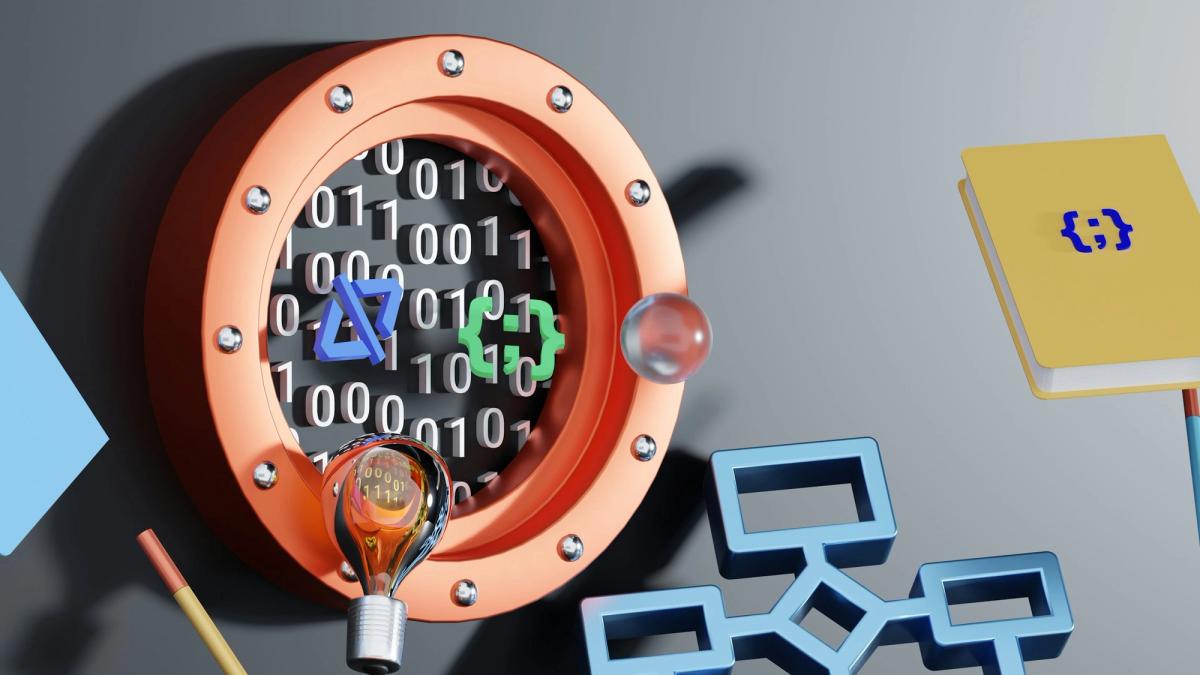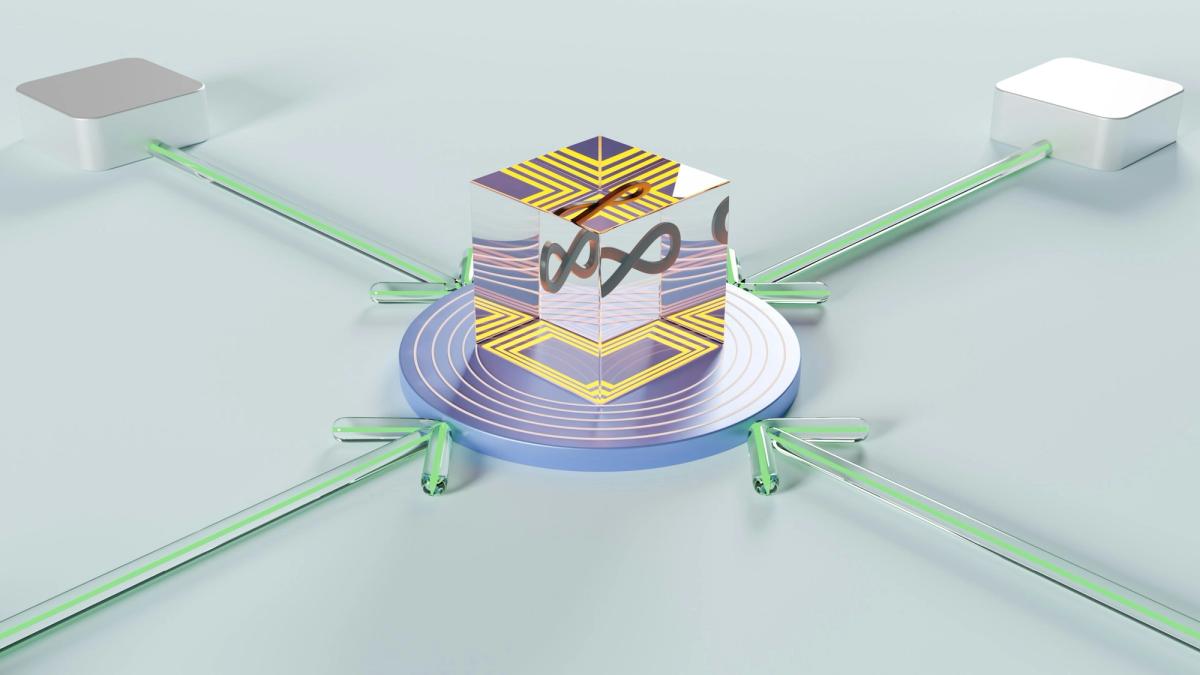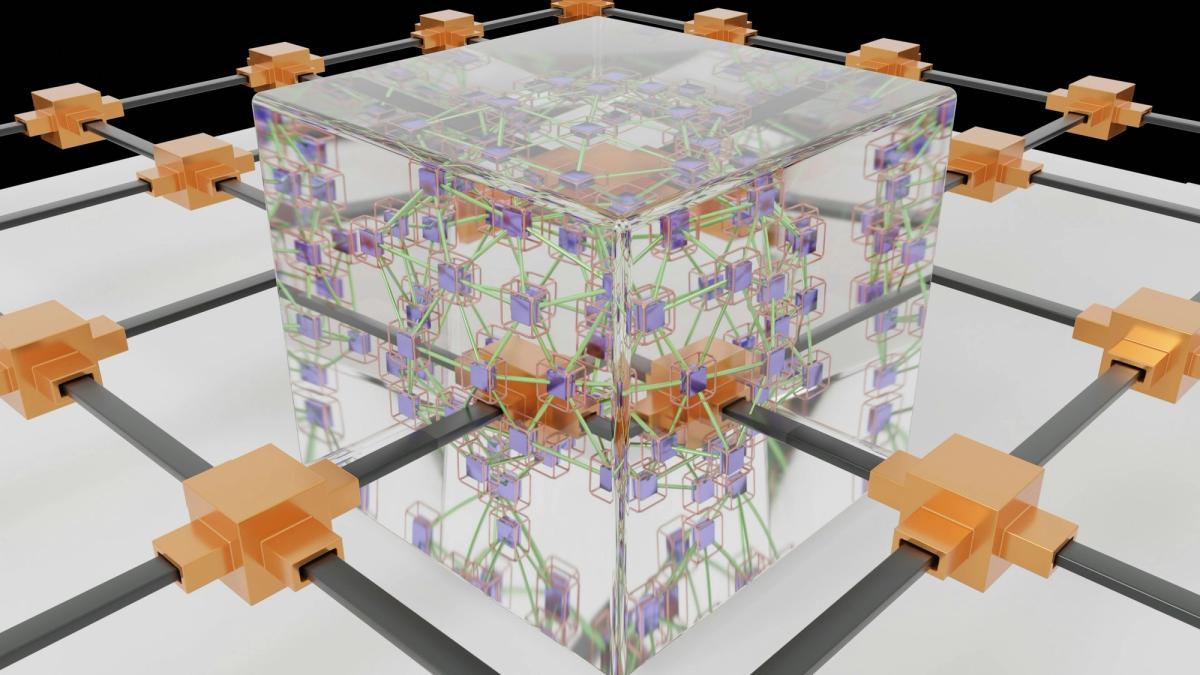What Is Edge Inference and Why It’s a Game Changer for AI
Published on Apr 25, 2025
Get Started
Fast, scalable, pay-per-token APIs for the top frontier models like DeepSeek V3 and Llama 3.3. Fully OpenAI-compatible. Set up in minutes. Scale forever.
Imagine your smart devices, like drones or security cameras, detecting and classifying objects independently, without a cloud connection. This would reduce network latency, allowing devices to make accurate decisions in real time, and enhance privacy by ensuring sensitive data never leaves the device. Edge inference, or AI inference at the edge, makes this possible by letting devices deploy and run high-performance AI models locally. This blog will illustrate its significance and provide practical guidance on deploying edge inference to achieve your goals. Additionally, understanding AI Inference vs Training is crucial to optimizing model performance and ensuring smooth deployment.
One helpful resource for getting started with edge inference is AI inference APIs. These valuable tools can help you seamlessly deploy high-performance AI models at the edge to achieve real-time processing, lower costs, and enhanced privacy without relying on the cloud.
What Is Edge Inference, and Why Is It So Important?

Edge AI, or AI on the edge, merges edge computing and artificial intelligence to run machine learning tasks directly on interconnected edge devices. By enabling data storage close to the device’s location, edge computing minimizes reliance on cloud processing.
AI algorithms then analyze this data at the network’s edge, functioning with or without an internet connection. This setup allows for millisecond-level processing, ensuring real-time feedback for users.
Benefits and Use Cases of AI Inference in Edge Computing

One of the most significant advantages of AI inference at the edge is the real-time processing of data. Traditional cloud computing often involves sending data to centralized servers for analysis, which can introduce latency due to the distance and network congestion.
Edge computing mitigates this by processing data locally on edge devices or near the data source. This low-latency processing is crucial for applications requiring immediate responses, such as autonomous vehicles, industrial automation, and healthcare monitoring.
Privacy and Security: Keeping Your Data Close to Home
Transmitting sensitive data to cloud servers for processing poses potential security risks. Edge computing addresses this concern by keeping data close to its source, reducing the need for extensive data transmission over potentially vulnerable networks.
This localized processing enhances data privacy and security, making edge AI particularly valuable in sectors handling sensitive information, such as:
- Finance
- Healthcare
- Defense
Bandwidth Efficiency: Why Send It If You Don’t Have To?
By processing data locally, edge computing significantly reduces the volume of data that needs to be transmitted to remote cloud servers. This reduction in data transmission requirements has several vital implications, including reducing network congestion, as the local processing at the edge minimizes the burden on network infrastructure.
The diminished need for extensive data transmission leads to lower bandwidth costs for organisations and end-users, as transmitting less data over the Internet or cellular networks can translate into substantial savings. This benefit is particularly relevant in environments with limited or expensive connectivity, such as remote locations. In essence, edge computing optimises the utilisation of available bandwidth, enhancing the overall efficiency and performance of the system.
Scalability: Building Your Edge AI Network
AI systems at the edge can be scaled efficiently by deploying additional edge devices as needed, without overburdening central infrastructure. This decentralised approach also enhances system resilience. In network disruptions or server outages, edge devices can continue to operate and make decisions independently, ensuring uninterrupted service.
Energy Efficiency: Saving Power at the Edge
Edge devices are often designed to be energy-efficient, making them suitable for environments where power consumption is a critical concern. By performing AI inference locally, these devices minimise the need for energy-intensive data transmission to distant servers, contributing to overall energy savings.
Hardware Accelerators: The Engines of Edge AI
AI accelerators play a critical role in enabling efficient AI inference at the edge. , such as:
- NPUs
- GPUs
- TPUs
- Custom ASICs
These specialized processors are designed to handle the intensive computational tasks AI models require, delivering high performance while optimizing power consumption.
Integrating accelerators into edge devices makes it possible to run complex deep learning models in real time with minimal latency, even on resource-constrained hardware. This is one of the best AI enablers, allowing larger and more powerful models to be deployed at the edge.
Offline Operation: Maintaining Functionality Without Connectivity
Offline operation through Edge AI in IoT is critical, particularly when Constant internet connectivity is uncertain. Edge AI systems ensure uninterrupted functionality in remote or inaccessible environments with unreliable network access. This resilience extends to mission-critical applications, enhancing response times and reducing latency, such as in autonomous vehicles or security systems. Edge AI devices can locally store and log data when connectivity is lost, safeguarding data integrity.
They are integral to redundancy and fail-safe strategies, providing continuity and decision-making capabilities, even when primary systems are compromised. This capability augments the adaptability and dependability of IoT applications across a broad spectrum of operational settings.
Customization and Personalization: Tailoring the Edge to Your Needs
AI inference at the edge enables high customization and personalization by processing data locally. Systems can deploy real-time customized models for user needs and specific environmental contexts.
AI systems can quickly respond to changes in:
- User behavior
- Preferences
- Surroundings
Offering highly tailored services. The ability to customise AI inference services at the edge without relying on continuous cloud communication ensures faster, more relevant responses, enhancing user satisfaction and overall system efficiency.
The Shift Toward Edge AI: Real-Time, Private, and Efficient Inference
The traditional paradigm of centralised computation, wherein these models reside and operate exclusively within data centres, has limitations, particularly in scenarios where real-time processing, low latency, privacy preservation, and network bandwidth conservation are critical.
This demand for AI models to process data in real time while ensuring privacy and efficiency has led to a paradigm shift for AI inference at the edge. AI researchers have developed various optimization techniques to improve the efficiency of AI models, enabling AI model deployment and efficient inference at the edge.
Real-World Applications of AI Inference at the Edge Across Industries

The rapid advancements in artificial intelligence (AI) have transformed numerous sectors, including:
- Healthcare
- Finance
- Manufacturing
AI models, intense learning models, have proven highly effective in tasks such as image classification, natural language understanding, and reinforcement learning. Performing data analysis directly on edge devices is becoming increasingly crucial in scenarios like:
- Augmented reality
- Video conferencing
- Streaming
- Gaming
- Content Delivery Networks (CDNs)
- Autonomous driving
- The Industrial Internet of Things (IoT)
- Intelligent power grids
- Remote surgery
- Security-focused applications, where localized processing is essential.
Internet of Things (IoT)
The capabilities of smart sensors significantly drive the expansion of the Internet of Things (IoT). These sensors act as the primary data collectors for IoT, producing large volumes of information.
Centralizing this data for processing can result in delays and privacy issues. This is where edge AI inference becomes crucial. AI models facilitate immediate analysis and decision-making at the source by integrating intelligence directly into the smart sensors.
This localized processing reduces latency and the necessity to send large data quantities to central servers. As a result, smart sensors evolve from mere data collectors to real-time analysts, becoming essential in the progress of IoT.
Industrial Applications
In industrial sectors, especially manufacturing, predictive maintenance is crucial in identifying potential faults and anomalies in processes before they occur. Traditionally, heartbeat signals, which reflect the health of sensors and machinery, are collected and sent to centralized cloud systems for AI analysis to predict faults.
However, the current trend is shifting. By leveraging AI models for data processing at the edge, we can enhance the system's performance and efficiency, delivering timely insights at a significantly reduced cost.
Mobile / Augmented Reality (AR)
The processing requirements in mobile and augmented reality are significant due to the need to handle large volumes of data from various sources, such as cameras, Lidar, and multiple video and audio inputs.
To deliver a seamless augmented reality experience, this data must be processed within a stringent latency range of about 15 to 20 milliseconds. AI models are effectively utilized through specialized processors and cutting-edge communication technologies.
The integration of edge AI with mobile and augmented reality results in a practical combination that enhances real-time analysis and operational autonomy at the edge. This integration reduces latency and aids in energy efficiency, which is crucial for these rapidly evolving technologies.
Security Systems
Combining video cameras with edge AI-powered video analytics in security systems transforms threat detection. Traditionally, video data from multiple cameras is transmitted to cloud servers for AI analysis, which can introduce delays.
With AI processing at the edge, video analytics can be conducted directly within the cameras. This allows for immediate threat detection, and depending on the analysis's urgency, the camera can quickly notify authorities, reducing the chance of threats going unnoticed. This move to AI-integrated security cameras improves response efficiency and strengthens security at crucial locations such as airports.
Robotic Surgery
In critical medical situations, remote robotic surgery involves conducting surgical procedures with the guidance of a surgeon from a remote location. AI-driven models enhance these robotic systems, allowing them to perform precise surgical tasks while maintaining continuous communication and direction from a distant medical professional.
This capability is crucial in the healthcare sector, where real-time processing and responsiveness are essential for smooth operations under high-stress conditions. Deploying AI inference at the edge is vital for such applications to ensure safety, reliability, and fail-safe operation in critical scenarios.
Autonomous Driving
Autonomous driving is a pinnacle of technological progress, with AI inference at the edge taking a central role. AI accelerators in cars empower vehicles with onboard models for rapid real-time decision-making.
This immediate analysis enables autonomous vehicles to navigate complex scenarios with minimal latency, bolstering safety and operational efficiency. By integrating AI at the edge, self-driving cars adapt to dynamic environments, ensuring safer roads and reduced reliance on external networks.
This fusion represents a transformative shift, where vehicles become intelligent entities capable of swift, localized decision-making, ushering in a new era of transportation innovation.
Key Industry Applications of Edge AI: Enhancing Efficiency and Security
Technologies such as self-driving cars, wearable devices, security cameras, and smart home appliances leverage Edge AI to deliver instant, critical information. As industries continue to explore its potential, Edge AI is gaining traction for optimizing workflows, automating business processes, and driving innovation—while simultaneously addressing challenges like:
- Latency
- Security
- Cost efficiency
Edge AI vs. Distributed AI: What’s the Difference?
Edge AI enables localized decision-making, reducing the need to transmit data to a central location and wait for processing. This facilitates the automation of business operations. Data must still be transmitted to the cloud to retrain AI models and deploy updates. Scaling this approach across multiple locations and diverse applications presents challenges such as:
- Data gravity
- System heterogeneity
- Scalability
- Resource constraints
The Role of Multi-Agent Systems in Distributed AI
Distributed AI (DAI) helps address these challenges by enabling intelligent data collection, automating AI life cycles, adapting and monitoring edge devices, and optimizing data and AI pipelines. DAI coordinates and distributes tasks, objectives, and decision-making processes within a multi-agent environment, allowing AI algorithms to operate autonomously across:
- Multiple systems
- Domains
- Edge devices at scale
Edge AI vs. Cloud AI: What’s the Difference?
Cloud computing and APIs are primarily used to train and deploy machine learning models. Edge AI enables machine learning tasks such as predictive analytics, speech recognition, and anomaly detection to be performed closer to the user.
Rather than relying solely on cloud-based applications, edge AI processes and analyzes data near its source. This allows machine learning algorithms to run directly on IoT devices, eliminating the need to transmit data to a private data center or cloud computing facility.
Enhancing Real-Time Decision-Making in Autonomous Systems with Edge AI
Edge AI is particularly beneficial when real-time predictions and data processing are critical. Rapid decision-making is essential for safe navigation in self-driving vehicles, which must instantly detect and respond to various factors, including:
- Traffic signals
- Erratic drivers
- Lane changes
- Pedestrians
- Curbs
By processing data locally within the vehicle, edge AI reduces the risk of delays caused by connectivity issues when sending data to a remote server. In high-stakes situations where immediate response times can be a matter of life or death, edge AI ensures the vehicle reacts swiftly and effectively.
Scalability and Performance Benefits of Cloud AI for Advanced Model Training
Cloud AI refers to deploying AI models on cloud servers, providing enhanced data storage and processing power. This approach is ideal for training and deploying complex AI models that require significant computational resources.
Key Differences Between Edge AI and Cloud AI
Computing Power
Cloud AI can provide better computational capabilities and storage capacity than edge AI, facilitating the training and deploying of more intricate and advanced AI models. Edge AI has a limit on processing capacity due to the device’s size limitation.
Latency
Latency directly affects:
- Productivity
- Collaboration
- Application performance
- User experience
The higher the latency (and the slower the response times), the more these areas suffer. Edge AI provides reduced latency by processing data directly on the device, whereas cloud AI sends data to distant servers, leading to increased latency.
Network Bandwidth
Bandwidth refers to the public data transfer of inbound and outbound network traffic around the globe. Edge AI calls for lower bandwidth due to local data processing on the device, whereas cloud AI involves data transmission to distant servers, demanding higher network bandwidth.
Security
Edge architecture offers enhanced privacy by processing sensitive data directly on the device, whereas cloud AI entails transmitting data to external servers, potentially exposing sensitive information to third-party servers.
Benefits of Edge AI for End Users
According to a Grand View Research, Inc. report, the global edge AI market was valued at USD 14,787.5 million in 2022 and is expected to grow to USD 66.47 million by 2023.
This rapid expansion of edge computing is driven by the rise in demand for IoT-based edge computing services, alongside edge AI’s other inherent advantages.
The primary benefits of edge AI include:
Diminished Latency
Through complete on-device processing, users can experience rapid response intervals without any delays caused by the need for information to travel back from a distant server.
Decreased Bandwidth
As edge AI processes data locally, it minimizes the data transmitted over the Internet, preserving internet bandwidth. The data connection can handle more simultaneous data transmission and reception with less bandwidth.
Real-Time Analytics
Users can perform real-time data processing on devices without system connectivity and integration, enabling them to save time by consolidating data without communicating with other physical locations.
Edge AI might encounter limitations in managing the extensive volume and diversity of data demanded by specific AI applications. It may need to be integrated with cloud computing to harness its resources and capacities.
Data Privacy
Privacy increases because data isn’t transferred to another network, which may be vulnerable to cyberattacks. By processing information locally on the device, edge AI reduces the risk of data mishandling.
In industries subject to data sovereignty regulations, edge AI can aid in maintaining compliance by locally processing and storing data within designated jurisdictions. On the other hand, any centralized database has the potential to become an enticing target for potential attackers, meaning edge AI isn’t completely immune to security risks.
Scalability
Edge AI expands systems using cloud-based platforms and inherent edge capabilities on original equipment manufacturer (OEM) technologies, encompassing software and hardware.
These OEM companies have begun to integrate native edge capabilities into their equipment, simplifying the process of scaling the system. This expansion also enables local networks to maintain functionality even when nodes upstream or downstream experience downtime.
Reduced Costs
Expenses associated with AI services hosted on the cloud can be high. Edge AI offers the option of utilizing costly cloud resources as a repository for post-processing data accumulation intended for subsequent analysis rather than immediate field operations. This reduces the workloads of cloud computers and networks.
CPU, GPU, and memory utilization significantly reduces as their workloads are distributed among edge devices, distinguishing edge AI as the more cost-effective option.
Reducing Network Congestion and Enhancing Efficiency with Edge Computing
When cloud computing handles all the computations for a service, the centralized location bears a significant workload. Networks endure high traffic to transmit data to the central source. As machines execute tasks, the networks become active once more, transmitting data back to the user.
Edge devices remove this continuous back-and-forth data transfer. As a result, both networks and machines experience reduced stress when they’re relieved from the burden of handling every aspect.
Cost Efficiency and Reduced Human Oversight in Edge AI Implementation
The autonomous traits of edge AI eliminate the need for continuous supervision by data scientists. Although human interpretation will consistently play a pivotal role in determining the ultimate value of data and the outcomes that it yields, edge AI platforms assume some of this responsibility, ultimately leading to cost savings for businesses.
Related Reading
- Model Inference
- AI Learning Models
- MLOps Best Practices
- MLOps Architecture
- Machine Learning Best Practices
- AI Infrastructure Ecosystem
What’s the Difference Between Data Center/Cloud vs. Edge Inference?

Cloud inference is the original method for running inference on AI models. With cloud inference, the model runs on a server in a data center, and the results are returned to the user.
Edge inference, on the other hand, runs the model locally on an edge device. The results are returned instantly because there is no need to send data anywhere and no latency associated with waiting for a response.
What's Under the Hood?
Cloud-based AI inference initially relied on CPUs, notably Intel’s Xeon processors. However, as AI models grew in complexity, the industry shifted toward more efficient architectures, with data centers adopting specialized accelerators like Nvidia GPUs to enhance inference performance. With their multiple cores and high multiply-accumulate (MAC) operations per clock cycle, these GPUs significantly reduce processing time for large AI models.
Data centers optimize inference by running multiple AI jobs simultaneously and batching them to boost efficiency. Their advanced cooling systems support high-power PCIe boards with thermal design power (TDP) ratings ranging from 75 to 300 watts. Inference accelerators can handle various AI models, continuously scaling performance to accommodate increasingly complex workloads.
How Does Edge Inference Work?
Running inference at the edge is very different. Edge systems typically run one model from one sensor. The sensors capture some portion of the electromagnetic spectrum, such as light, radar, or LIDAR, in a 2D “image” of 0.5 to 6 megapixels. The sensors capture data at frame rates from 10 to 100 frames per second.
Applications are almost always latency sensitive; the customer wants to process the neural network model as soon as frames are captured to take action. So, customers wish to batch sizes equal to one. Batching from one sensor means waiting to accumulate 2, 4, or 8 images before processing them; latency is terrible. Many applications are accuracy-critical. Think medical imaging, for example. You want your X-ray or Ultrasound diagnosis to be accurate!
Optimization of Edge AI Models: Convolutional Architectures and Power-Efficient Hardware for Cost-Effective Performance
The models are typically convolution-intensive and often derivatives of YOLOv3. Some edge systems incorporate small servers (think MRI machines, which are big and expensive) and can handle 75W PCIe cards.
Many edge servers are lower-cost and can benefit from less costly PCIe cards with good price/performance. Higher-volume edge systems incorporate inference accelerator chips that dissipate up to 15W (no fans).
Cloud Inference vs. Edge Inference: Use Cases
The application everyone thinks of first is typically autonomous vehicles. But actual autonomous driving is a decade or more away. In the 2020s, the value of inference will be in driver assistance and safety (detecting distraction, sleep, etc). Design cycles are 4-5 years, so a new inference chip today won’t show up in your vehicle till 2025 or later. What are the other markets using edge inference today?
Edge Servers
Last year, Nvidia announced inference sales outstripped training for the first time. This was likely shipped to data centers, but many applications are outside. This means that sales of PCIe inference boards for edge inference applications are likely in the hundreds of millions of dollars per year and are rapidly growing. Many edge servers are deployed in factories, hospitals, retail stores, financial institutions, and other enterprises. In many cases, sensors in the form of cameras are already connected to the servers, but they record what’s happening in case of an accident or theft. Now, these servers can be supercharged with low-cost PCIe inference boards.
Cost-Effective Edge AI Inference: Affordable Hardware Solutions and Applications in Diverse Industries
There are many applications: surveillance, facial recognition, retail analytics, genomics/gene sequencing, industrial inspection, medical imaging, and more. Since training in floating point and quantization requires a lot of skill/investment, most edge server inference is likely done in 16-bit floating point, with only the highest-volume applications being done in INT8.
Until now, edge servers that did inference used the Nvidia Tesla T4, a great product but $2000+. Many servers are low-cost and can now benefit from inference accelerator PCIe boards at prices as low as $399, but with the throughput/$ being the same or better than T4.
Higher Volume Edge Systems
Higher volume, high accuracy/quality imaging applications include:
- Robotics
- Industrial automation/inspection
- Medical imaging
- Scientific imaging
- Cameras for surveillance
- Object recognition
- Photonics, etc.
In these applications, the end products sell for thousands to millions of dollars, the sensors capture 0.5 to 6 Megapixels, and “getting it right” is critical, so they want to use the best models (for example, YOLOv3, which is a heavy model at 62 million weights and >300 billion MACs to process a 2 megapixel image) and to use the most prominent image size they can (just like humans, we can recognize people better with a large crisp image than a small one).
Scaling Edge AI: The Need for Higher Throughput and Efficiency in Low-Cost Inference Solutions
The leading players here are Nvidia Jetson (Nano, TX2, Xavier AGX, and Xavier NX) at 5- 30W and $250-$800. Customers we talk to are starved for throughput and are looking for solutions that will give them more throughput and larger image sizes for the same power/price as they use today.
Their solutions will be more accurate and reliable when they get it, and market adoption and expansion will accelerate. So, although the applications today are in the thousands or tens of thousands of units, this will proliferate with the availability of inference that delivers more and more throughput/$ and throughput/watt.
Cost-Effective Inference Accelerators: Driving High-Volume Edge AI Applications
Some inference accelerators can outperform Xavier NX at lower power and at prices for million/year quantities that are 1/10th of Xavier NX. This will drive much higher-volume applications of performance inference acceleration. This market segment should become the largest because of the breadth of applications.
Low Accuracy/Quality Imaging
Many consumer products or applications where accuracy is nice but not critical will opt for tiny images and simpler models like Tiny YOLO. In this space, the leaders are Jetson Nano, Intel Movidius, and Google Edge TPU at $50-$100.
Voice and Lower Throughput Inference
Imaging neural network models require trillions of MACs/second for 30 frames/second of megapixel images. For keyword recognition, voice processing requires billions of MACs/second or even less.
These applications, like Amazon Echo, are already significant in adoption and volume, but the $/chip is much less. The players in this market differ from those in the above market segments.
Cell Phones
Almost all cell phone application processors have an AI module of the SoC for local processing of simple neural network models. The leading players here are:
- Apple
- Qualcomm
- Mediatek
- Samsung
This is the highest unit volume of AI deployment at the edge today.
What Matters for Edge Inference Customers
Latency
The first is latency. Edge systems make decisions based on images of up to 60 frames per second. In a car, for example, it is vital that objects like people, bikes, and vehicles be detected and their presence acted upon in as little time as possible. In all edge applications, latency is #1, which means batch size is almost always 1.
Numerics
The second is numerics. Many edge server customers will stay with floating point for a long time, and BF16 is the easiest for them to move to since they just truncate 16 bits off their FP32 inputs and weights.
Given the cost and complexity of quantization, fanless systems will be INT8 if they are high volume, but many will be BF16 if volumes stay in the thousands. An inference accelerator that can do both gives customers the ability to start quickly with BF16 and shift seamlessly to INT8 when they are ready to invest in quantization.
Throughput
The third is throughput for the customer’s model and image size. Customers typically run one model and know their image size and sensor frame rate. Almost every application wants to process megapixel images (1, 2, or 4) at 30 or even 60 frames/second frame rates.
Most applications are vision CNNs, but many have many different models, even ones processing 3-dimensional images or images in time (think MRI, etc.), LIDAR, or financial modeling. The only customers who run more than one model are automotive, which must process vision, LIDAR, and one or two other models simultaneously.
Efficency
Fourth is efficiency. Almost all customers want more throughput/image size per dollar and watt. Most tell us they want to increase throughput and image size for their current dollar and power budgets. As throughput/$ and throughput/watt increase, new applications will become possible at the low end of the market, where the volumes are exponentially larger.
Related Reading
- AI Infrastructure
- MLOps Tools
- AI as a Service
- Machine Learning Inference
- Artificial Intelligence Cost Estimation
- AutoML Companies
- LLM Inference Optimization
Edge Inference Concepts and Architecture Consideration

Edge computing is about processing real-time data near the data source, which is considered the network’s edge. Applications are run as physically close as possible to the site where the data is being generated instead of a centralized cloud or data center storage location.
For example, suppose a vehicle automatically calculates fuel consumption based on data received directly from the sensors. In that case, the computer performing that action is called an Edge Computing device or simply “Edge device”.
Data Processing
- Edge Computing: Processes data closer to the source, minimizing the need for data transfer.
- Cloud Computing: Stores and processes data in a central location, typically a data center.
Latency
- Edge Computing: Significantly reduces latency, enabling near-instant inference and decreasing network lag-related failures.
- Cloud Computing: Requires more time to process data, as it involves data transfer between the edge and the cloud.
Security and Privacy
- Edge Computing: Keeps most data localized, reducing system vulnerabilities.
- Cloud Computing: Has a larger attack surface, making it more susceptible to security threats.
Power Efficiency and Cost
- Edge Computing: Utilizes accelerators to reduce both cost and power consumption per inference channel.
- Cloud Computing: Incurs higher expenses due to connectivity, data migration, bandwidth, and latency considerations.
Enhancing Security and Efficiency with On-Device AI Inference
The integration of Artificial Intelligence (AI) algorithms in edge computing enables an edge device to infer or predict based on the continuously received data, known as Inference at the Edge. Inference at the edge allows data-gathering devices, such as sensors, cameras, and microphones, to provide actionable intelligence using AI techniques.
It also improves security as the data is not transferred to the cloud. Inference requires a pre-trained deep neural network model. Typical tools for training neural network models include:
- Tensorflow
- MxNet
- Pytorch
- Caffe
The model is trained by feeding as many data points as possible into a framework to increase its prediction accuracy.
Architecture Considerations: Building a Foundation for Edge Inference
Throughput
For images, measuring the throughput in inferences/second or samples/second is a good metric because it indicates peak performance and efficiency. These metrics are often found in benchmark tools such as ResNet-50 or MLPerf. Knowing the required throughput for the use cases in the market segments helps determine the processors and applications in your design.
Latency
This is a critical parameter in edge inference applications, especially in manufacturing and autonomous driving, where real-time applications are necessary. Images or events that happen need to be processed and responded to within milliseconds.
Hardware and software framework architectures influence system latency. Understanding the system architecture and choosing the proper SW framework are essential.
Precision
High precision, such as 32-bit or 64-bit floating-point, is often used for neural network training to achieve a sure accuracy faster when processing large data sets. This complex operation usually requires dedicated resources due to the high processing power and extensive memory utilization. Inference, in contrast, can achieve a similar accuracy by using lower-precision multiplications because the process is more straightforward, optimized, and compressed data.
Inference does not require as much processing power and memory utilization as training; resources can be shared with other operations to reduce cost and power consumption. Using cores optimized for the different precision levels of matrix multiplication also helps to increase throughput, reduce power, and increase the overall platform efficiency.
Power consumption
Power is critical when choosing processors, power management, memory, and hardware devices to design your solution. Some edge inference solutions, such as safety surveillance systems or portable medical devices, use batteries to power the system.
Power consumption also determines the thermal design of the system. A design that can operate without additional cooling components such as a fan or heatsink can lower the product cost.
Design scalability
Design scalability expands a system for future market needs without redesigning or reconfiguring it. This also includes the effort of deploying the solution in multiple places.
Most edge inference solution providers use heterogeneous systems that can be written in different languages and run on various operating systems and processors. Packaging your code and all its dependencies into container images can also help you deploy your application quickly and reliably to any platform, regardless of the location.
Use case requirements
Understanding how your customers use the solution determines the features your solution should support. The following are some examples of use case requirements for different market segments.
Industrial/Manufacturing
- High-sensitivity cameras for low-light ambient, smoke, sparks, heat, and splattered hazards.
- Requires multiple installation points.
- Small cameras with 360-degree views at places where humans can't access.
Retail
- Multiple camera connections to the edge computers.
- Real-time object detection and triggering system.
- Cameras with a 360-degree view of shelves and POS monitoring.
- Easy integration with existing systems, such as POS and RFID systems.
Medical/Healthcare
- Rechargeable battery-powered systems for mobility.
- A real-time image capturing with high resolution.
- Accelerators are required to run complex calculations.
Smart city
- Ruggedized system to withstand extreme weather like fog, snow, and thunderstorms.
- Must be able to operate 24/7. Able to detect objects in low light ambient such as in a tunnel or under a bridge.
- Able to integrate with smoke, fire, or falling object detection.
- Hardware needs to be able to operate in an extended temperature range to match outdoor conditions.
- The neural network model training dataset should include different ambient, weather, and season.
Start Building with $10 in Free API Credits Today!

AI Inference powers the smooth operation of AI applications. It reduces the vast models produced during AI training to a size that can be easily managed and provides the capability to generate rapid predictions using these smaller models.
With AI inference, businesses can continuously improve the performance and accuracy of their AI applications while lowering costs. The more a model is run, the better it gets.
Standard Inference vs. Specialized Inference
OpenAI-compatible serverless inference APIs allow developers to run large language models (LLMs) with minimal upfront costs. Inference offers the highest performance at the lowest price on the market and provides specialized batch processing for large-scale asynchronous AI workloads.
Beyond standard inference, Inference also provides document extraction capabilities designed explicitly for retrieval-augmented generation applications.
Related Reading
- LLM Serving
- LLM Platforms
- Inference Cost
- Machine Learning at Scale
- TensorRT
- SageMaker Inference
- SageMaker Inference Pricing





